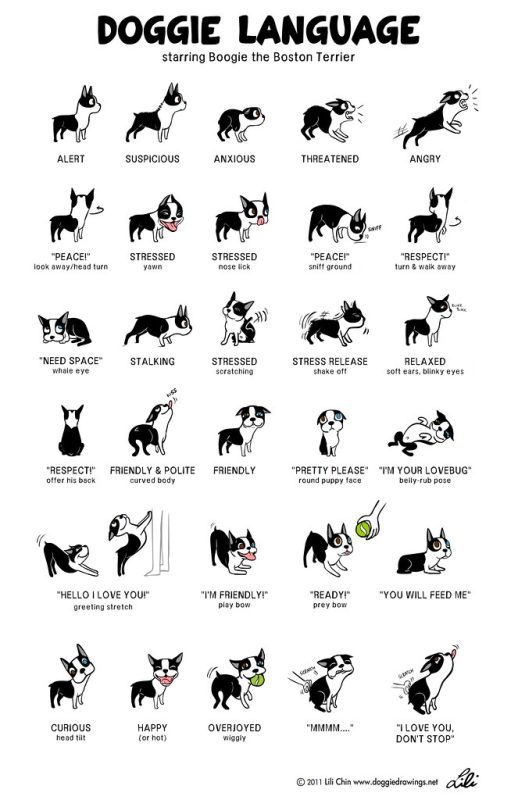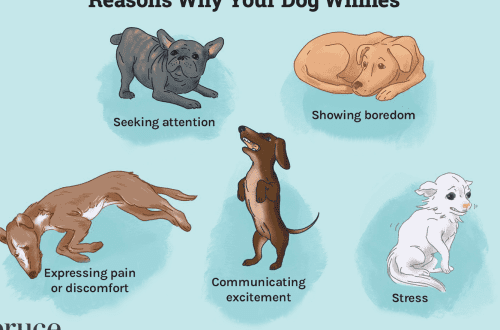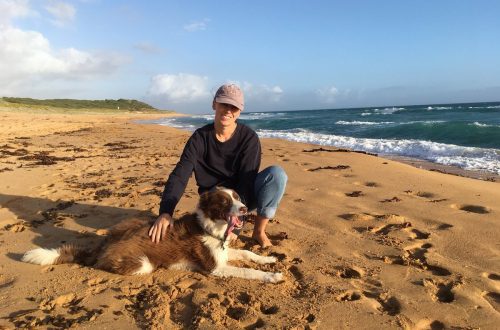
Learning to understand the language of dogs.
Words play an important role in human communication, but dogs convey their mood through sounds and body language. While the dog understands your words, especially if you have tried to teach him simple commands such as “Sit!”, “Next!” and “Stop!”, you also need to learn to understand and interpret her body language.
Contents
Sounds
As soon as one day your dog “talks”, film it and enjoy the fame. Until then, use these little tips to decipher your dog’s body language. Dogs communicate through body movements, but there are some vocal cues that can help you understand what the animal is thinking or feeling.
Rapid breathing
If the dog is calm, then rapid breathing can be completely silent. It can be so subtle that it can be mistaken for light breathing. Slightly rapid breathing occurs in animals when they are happy or overflowing with energy. If you take your pet for a walk, his breathing will become slightly faster. They also breathe frequently when they are nervous.
Close attention should be paid to heavy and rapid breathing. It can be a sign of a serious health problem. Rapid breathing can occur with overheating, injury, and chronic disease. If you notice that your dog is breathing rapidly, let him rest and cool down. If the rapid breathing does not go away for a long time, call your veterinarian and arrange an examination to exclude the presence of diseases.
Whining
Whining is difficult to interpret. Portal Vetstreet explains that whining can be a way of expressing a request, for example, to pay attention to her or feed her. The dog may be excited or full of energy. Some pets whine in response to stress. An injured or sick animal may whine to indicate discomfort. It is necessary to pay attention to other features of behavior in order to understand the cause of whining.
As you spend more and more time with your dog, you learn to understand different types of whining. By accompanying the whining with other body language cues, the dog can get your attention in this way. Some animals whine under the door when they want to use the toilet (congratulations on potty training your puppy, if that’s your case). As a rule, whining has a negative connotation, but in this case, the opposite is true. But if the dog is whining, and there are no signs that he is happy or wants to “go out”, health problems may be the cause. It’s best to play it safe and take your dog to the veterinarian, because the dog can’t tell you what’s wrong.
Barking
Translated into the language of people, barking is a cry. Your dog is trying to express his feelings, and the only way for him is to bark. The tone of a dog’s bark can vary, sometimes becoming threatening, but it’s always important to pay attention to it. A fast continuous bark is often a warning. Your dog has noticed an intruder in his territory and wants to warn his owners and other dogs nearby. Loud, booming barks are often a warning to a stranger: “Not a step further, I don’t know you!” Heed the dog’s advice and proceed with caution. Finally, a shrill bark is often issued by a wounded dog. If you hear a shrill barking dog, call for help. Perhaps she needs to be rescued urgently. But do not forget that a wounded animal can be extremely suspicious and perceive your attempts to help as a signal of danger.
The ability to howl, like barking, dogs inherited from wolves. This is a more expressive means of notifying other dogs in the area of your presence. Although howling can be loud and annoying, it is a means of communication for dogs.
Singing
Your pet may not become a world-class pop star, but he definitely can give a barking tone that is very reminiscent of singing. Dogs “sing” when they are happy. It’s not uncommon to find dogs that love to “sing” when you sit down at the piano, or to show you how happy they are to have you back home or play with them. This form of vocal expression allows your pet to show a good mood.
Body
The dog’s body position and other body language cues are ways of expressing the animal’s emotional state. What position is the dog’s body in? Is the dog trying to appear bigger? Or tries to snuggle to the ground when you appear?
Wool
If you think your dog may be aggressive towards you and you are afraid, keep an eye on the position of his coat. If the hair on the back of the head, neck and torso rises, she tells you to keep your distance. She may be nervous or angry. In this way, the dog gives you a signal to stop because he feels uncomfortable around you, or otherwise does not want you to approach him. Aggression may not be directed at you. With this little clue, the animal can warn of approaching danger. Due to the fact that the sense of smell and hearing in dogs is much sharper than in humans, it may be alarmed by something that you do not notice, and “asks” you to be more careful and attentive.
Tail
There are many clues in the dog’s tail. Is the dog wagging its tail? It means that she is filled with joy and energy. Is the tail hidden between the legs? This means that the animal is scared or nervous. A high, straight tail with a pipe indicates that the dog is all attention. This position of the body in a hunting dog indicates that the prey is somewhere nearby and you should approach it quietly and carefully. A proudly raised tail can be a sign that your dog is trying to show his superiority by taking up more space around him.
Body position
A dog’s body position can tell you about his emotions and intentions. If the dog tries to lower his body by arching his back, he is showing submission or fear. If you notice that her muscles are tense and she wants to appear bigger, then she wants to look like a leader, and it is better to let her calm down before approaching.
When a dog is calm, its entire body is relaxed. All four paws are on the ground, there is no tension in the muscles. If she feels calm next to you and is not stressed, she may fall apart on the ground, exposing her abdomen for stroking.
To demonstrate how good he is with you, the dog will begin to poke his nose at you. Often this movement means that he needs more attention: he will stick his nose into your palms, as if to say: “Pet me, stroke!”.
Head
Depending on the breed, muzzles in dogs come in different shapes and sizes. Some breeds have long and hanging ears, while others have short and erect ones. Regardless of breed, ears, eyes and mouth can tell a lot about their owner.
Head position can also be a sign that your pet is trying to understand you. Have you ever noticed how your dog tilts its head slightly to the side when you talk to it? This is how dogs show they are listening. Dogs can imitate their owners very well, and tilting your head can serve as a sign of empathy, an attempt to better understand what you’re saying, or an awareness that something good is coming, like a treat or a pet. Most often, the tilt of the head indicates an attempt to understand you.
Mouth
In a calm dog, the mouth is slightly open, the mouth is relaxed. A calm, happy dog will even try to lick the owner. A dog with a closed mouth or clenched jaws is nervous. Another manifestation of submissiveness in a dog is lip licking and yawning. For the dog, this is a natural way to calm down, but for the owner, it is a warning that the animal is under duress.
When an animal shows its teeth, it warns of danger and its intention to defend itself or protect you. Approach cautiously or move away from a dog that is growling and baring its teeth.
Eyes
As with humans, the most important expressive means of feelings in dogs are the eyes, and if you know your pet well, it will be easy for you to determine by the eyes what emotions she is experiencing. But the cues of a dog’s body language can also help decipher the experiences that its eyes convey. When the dog is calm and relaxed, his eyes have a normal shape. If the animal’s eyes are enlarged, this may be a sign of fear. However, an aggressive dog’s eyes can also appear larger, so be sure to pay attention to other body movements. If the dog is not feeling well, he will look sideways or with a downcast look.
Ear position
If the animal’s ears are lowered and laid back, this means humility or readiness for stroking. But if the ears are pressed against the body and the teeth are bared, the dog may be sensing danger or ready to go into “defense mode”. If the ears are raised, this can be interpreted in different ways. Raised ears may mean that her attention is focused on something. For example, a dog is dozing, and some movement begins in the room – its ears will gradually rise, while the body will remain in the same position. She simply listens to determine if it is worth interfering with what is happening around her. If the dog wakes up with his ears straightened, with a focused look, this also means that he is listening. If the ears are raised, straightened and directed forward, then something irritates her and, perhaps, she is in an aggressive mood.
If your dog has erect ears, one ear may be up and the other down. This is a common ear position, seen when the animal is just listening, not looking for anything in particular.
If you notice changes in your pet’s body language, such as heavy and rapid breathing or a drooping gaze, contact your veterinarian immediately. Perhaps the animal was hurt and needs urgent help.





